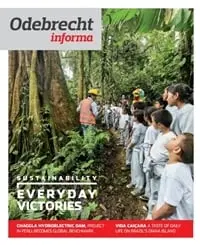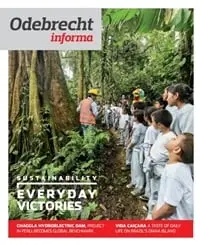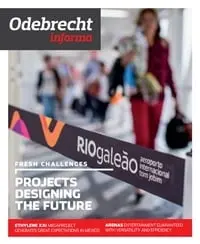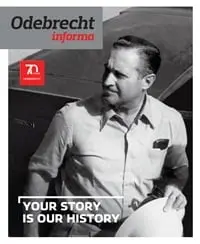written by Carlene Fontoura
photos by Beg Figueiredo
A quiet place with a family atmosphere. Children whose eyes shine with freedom and dreams. The houses are plain, but charming. This is the backdrop of the Boitaraca quilombola (maroon) community, a town founded by escaped slaves that is now part of Nilo Peçanha county, Bahia, in northeastern Brazil. The residents of this land of the free have many reasons to stay. “My ancestors built this place. I’ve never wanted to leave,” says matriarch Celina Neves Assunção, 74, or Dona Celina, who brims with joy when she recalls her childhood in that community.
About 80 km away, there is a quiet town surrounded by beautiful trees. In Ibirapitanga – “Brazil Wood” in the indigenous Tupi-Guarani language – residents are proud to see the progress on their streets, hills and squares. “Our town used to be a badly organized village. During the rainy season, mud would build up in the streets. Today, the situation is much better,” says Altamirando Santos, 92, who is proud of the honor of being the town’s second mayor.
Dona Celina and Altamirando are some of the oldest residents of their communities and have many stories to tell about Peçanha and Ibirapitanga. Both towns are part of the same Environmental Protection Area (APA) – Pratigi – and along with nine other municipalities (Valença, Camamu, Ituberá, Presidente Tancredo Neves, Maraú, Taperoá, Cairu, Igrapiúna and Piraí do Norte), they make up the Southern Bahia Lowlands. Located in the eastern part of the state, the region is home to about 285,000 people, according to the 2010 Census conducted by the Brazilian Institute of Geography and Statistics (IBGE).
Blessed with rich, fertile soil where people grow cassava, cocoa, cloves, palm oil, rubber, palm, piassava, guarana and black pepper, the Southern Lowlands have much to offer: a charming landscape and tremendous economic, tourism and cultural potential. The region is also composed of a mosaic of APAs that, besides Pratigi, also include Guaibim, Caminhos Ecológicos da Boa Esperança, Tinharé-Boipeba and Camamu Bay.
One of the first areas settled by Europeans in Brazil, the Southern Lowlands is a precious part of that country’s history. In colonial times, the region took on the challenge of supplying the newly founded city of Salvador – the colony’s first capital – with food. During the process of gaining the state’s independence from Portugal, the fortress of Morro de São Paulo played a key role as one of the rebels’ strategic defenses when blockading the city. “Because of its architecture, the fortress for many years managed to protect the capital from foreign attacks. It is one of the largest forts in Brazil,” says Francisco Santana, an architect from Brazil’s National Trust (IPHAN).
Period of recovery
Following World War II, farming and industry were disorganized and a stagnant economy took hold in that region. The process of recovery only began in 1980, thanks to the growth of tourism. Some destinations have become nationally and internationally famous, such as the islands of Tinharé and Boipeba in Cairú, the Pancada Grande waterfall in Ituberá, and Barra Grande, on the Maraú Peninsula.
In 1999, the region became the backdrop of several initiatives sponsored by the Odebrecht Foundation, which decided to focus on areas with low Human Development Indexes (HDIs). At first, the Foundation’s work concentrated on youth education, but it soon realized that this could not take place in isolation, as it required support for and from the young people’s families. Working through the Program for the Integrated and Sustainable Development of the Mosaic of Environmental Protection Areas in the Southern Bahia Lowlands (PDIS), the Foundation began organizing educational activities together with programs aimed at creating jobs and sources of income. By supporting civil society organizations of public interest (OSCIPs) and cooperatives, the PDIS has firmly established itself as an aggregator of social, economic, human and environmental programs.
“No matter how noble its aims may be, this kind of work can only be done synergistically,” said Maurício Medeiros, Executive President of the Odebrecht Foundation. Therefore, the PDIS has partnered up with the government – at the federal, state and local levels – and private enterprise. “The challenge is to offer people opportunities, because they are the creative driving force in that region,” adds Medeiros.
Heritage and tradition
People like Dona Celina have also benefited from projects supported by the Odebrecht Foundation. “At the end of the year, we hold the Old Folks’ Dance. Boys and girls dress up like their grandpas and grandmas and go out in the streets, singing and dancing,” she explains. This dance is not only entertaining but reflects the community’s everyday experiences, as participants recount the lives of the elder ladies of the community, with their famous samba de roda (samba in the round). Clearly moved, Dona Celina recalls and sings the song: “In my grandma’s day/there were one-man women/ they wore braids and buns/and didn’t flirt.” Today, the younger members of the community join in the dance. One of them, Camila Neves Assunção, 22, is Dona Celina’s granddaughter. “We have a duty to value and respect our ancestral heritage,” argues the alumnus of the Agroforestry Family House, one of the OSCIPs supported by the Odebrecht Foundation.
In addition to the Old Folks’ Dance, other traditional events include bumba-meu-boi, zambiapunga, congos, barquinhas and chegança dos mouros, as well as the festival of the Three Kings, the religious feast of the Epiphany. Antonia Francelina de Jesus Filha, 70, better known as Dona Nininha, is an expert in the local culture. A resident of Cairu, she has received the title of Master of Knowledge in recognition of her work to revive many local traditions. She has sewn costumes for years, and created the town’s first children’s troupe, Os Conguinhos.
“I got the children to join in these events because they were running wild in the streets, with almost no clothes and even barefoot. I started a campaign to get donations of scraps, materials we use to make the floats. We made our debut in 2008 on Bahia’s Independence Day, July 2. It was a big success!” she says, thrilled with the results.
Agro-ecotourism
When choosing a place to visit, more and more people seek not only to enjoy natural beauty but to experience the customs and lifestyle of the local community. Working through the PDIS, the Odebrecht Foundation has encouraged agro-ecotourism in the Southern Bahia Lowlands, which is based on a model of agricultural, ecological and sustainable tourism. “We are helping generate jobs, income and social inclusion, as well as fostering the appreciation of local culture,” says Liliana Leite, Executive Director of the Institute for the Sustainable Development of the Southern Bahia Lowlands (IDES), the OSCIP that promotes sustainable tourism in that region.
Seeing how handicrafts are made with piassava fiber is one of the activities on the agro-ecotourist’s itinerary in the Southern Lowlands, which mainly includes maroon communities. “Ah, the women make beautiful things!” exclaims Dona Celina. She says she is trying to get other residents to work together to bolster the local economy. “We want autonomy in our work,” she says.







